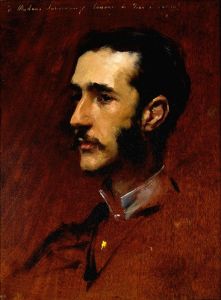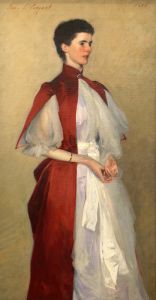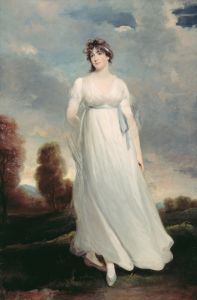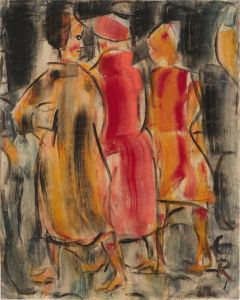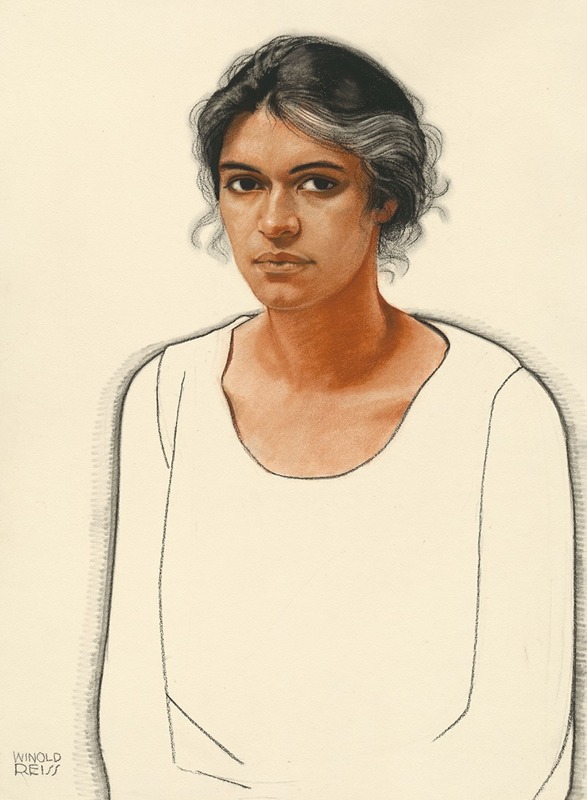
Elise J. McDougald
A hand-painted replica of Winold Reiss’s masterpiece Elise J. McDougald, meticulously crafted by professional artists to capture the true essence of the original. Each piece is created with museum-quality canvas and rare mineral pigments, carefully painted by experienced artists with delicate brushstrokes and rich, layered colors to perfectly recreate the texture of the original artwork. Unlike machine-printed reproductions, this hand-painted version brings the painting to life, infused with the artist’s emotions and skill in every stroke. Whether for personal collection or home decoration, it instantly elevates the artistic atmosphere of any space.
Winold Reiss was a German-born American artist known for his portraits and illustrations that captured the diversity of American life in the early 20th century. One of his notable works is the portrait of Elise Johnson McDougald, an influential African American educator, writer, and activist. This portrait is part of Reiss's broader effort to document and celebrate the cultural contributions of African Americans during the Harlem Renaissance.
Elise Johnson McDougald was a prominent figure in the Harlem Renaissance, a cultural movement that spanned the 1920s and 1930s, centered in the Harlem neighborhood of New York City. She was known for her work in education and her writings on race and gender issues. McDougald's essay "The Double Task: The Struggle of Negro Women for Sex and Race Emancipation" was published in the anthology "The New Negro," edited by Alain Locke, which was a seminal text of the Harlem Renaissance. Her work highlighted the dual challenges faced by African American women and advocated for their empowerment and recognition.
Winold Reiss's portrait of Elise J. McDougald is significant not only for its artistic merit but also for its historical and cultural context. Reiss was known for his empathetic and respectful portrayal of his subjects, often capturing their dignity and individuality. His work was characterized by a vibrant use of color and a keen attention to detail, which helped convey the personality and essence of the individuals he painted.
Reiss's portraits were part of a larger project to document the people and culture of Harlem during this vibrant period. His work was featured in various publications, including "The New Negro," where his portraits accompanied essays and literary works by African American writers and intellectuals. This collaboration between visual art and literature was instrumental in shaping the narrative of the Harlem Renaissance and promoting the talents and voices of African Americans.
The portrait of Elise J. McDougald by Winold Reiss is a testament to the artist's commitment to diversity and representation. It serves as a historical record of an important cultural movement and highlights the contributions of African American women, who were often marginalized in both society and the arts. Reiss's work remains an important part of American art history, reflecting the complexities and richness of the nation's cultural landscape.
In summary, Winold Reiss's portrait of Elise J. McDougald is a significant work that captures the spirit of the Harlem Renaissance and the contributions of African American women to the cultural and intellectual life of the period. Through his art, Reiss provided a platform for voices that were often unheard, and his portraits continue to be celebrated for their beauty, depth, and historical importance.





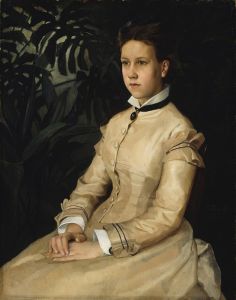

![Designs for Indian Room, Chic-n-Coop Restaurant, Montreal, Canada.] [Placemat design with chicken character wearing crown](/imgs/249244/s/winold-reiss-designs-for-indian-room-chicncoop-restaurant-montreal-canada-placemat-design-with-chicken-character-wearing-crown-67b965b8.jpg)

![Graphic design for Photo Engravers Convention, Chicago.] [Poster featuring cartoon-like storks](/imgs/249252/s/winold-reiss-graphic-design-for-photo-engravers-convention-chicago-poster-featuring-cartoonlike-storks-9f0255ed.jpg)
![Graphic textile or wallpaper designs with geometric patterns.] [Interior; mural color study, tropical theme with palm trees](/imgs/249359/s/winold-reiss-graphic-textile-or-wallpaper-designs-with-geometric-patterns-interior-mural-color-study-tropical-theme-with-palm-trees-aa2f4d5f.jpg)

![Studies of New York Coliseum, Columbus Circle, Convention Center.] [Color study perspective](/imgs/249444/s/winold-reiss-studies-of-new-york-coliseum-columbus-circle-convention-center-color-study-perspective-9184607e.jpg)

